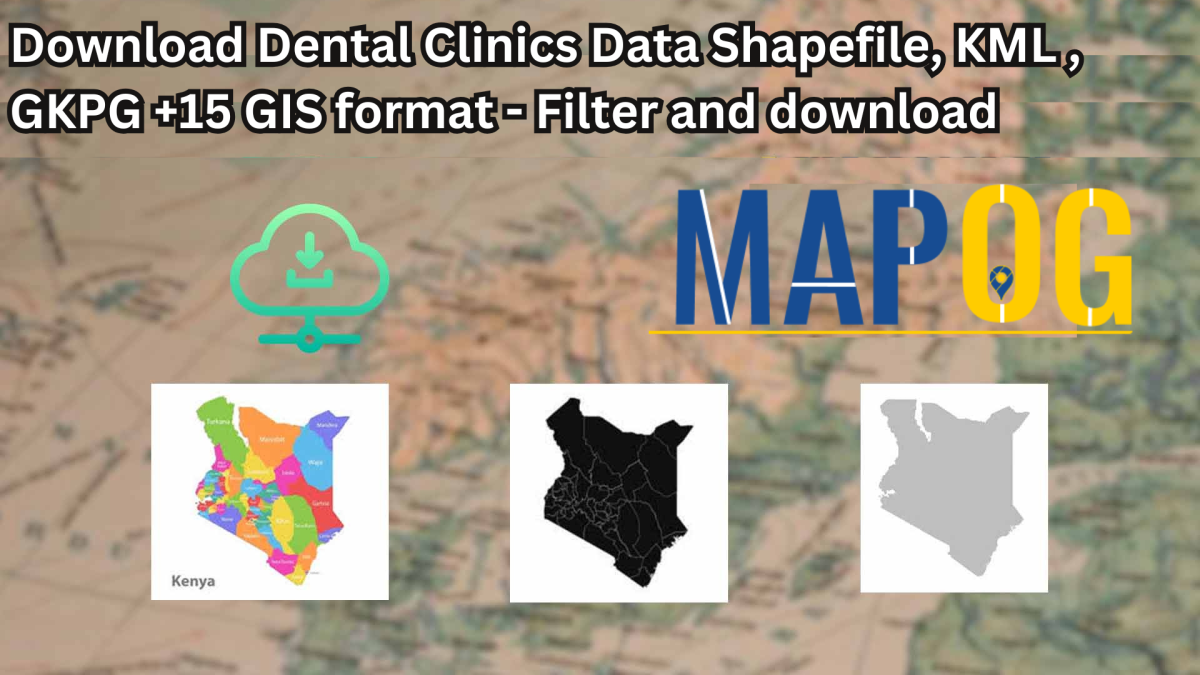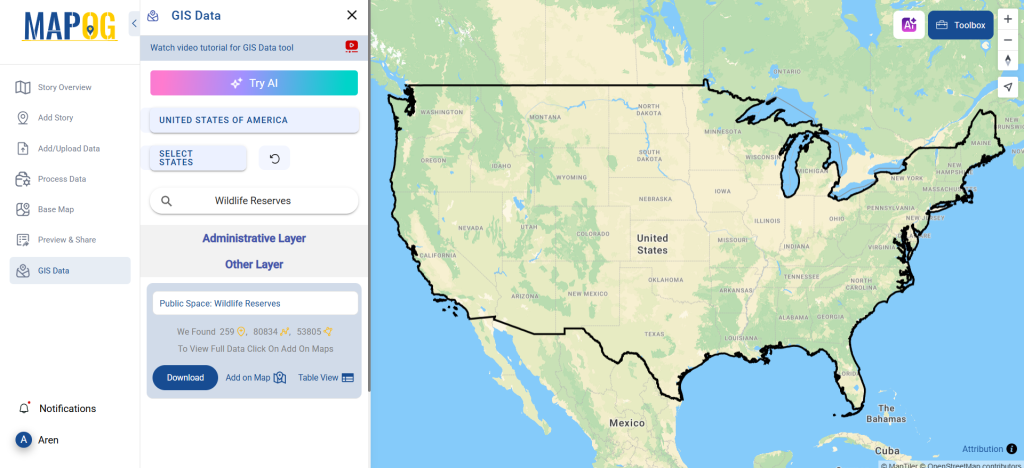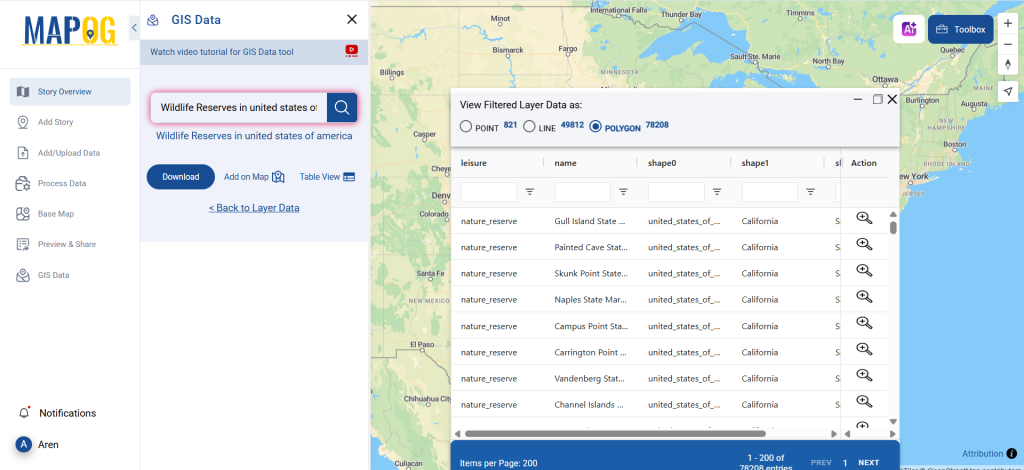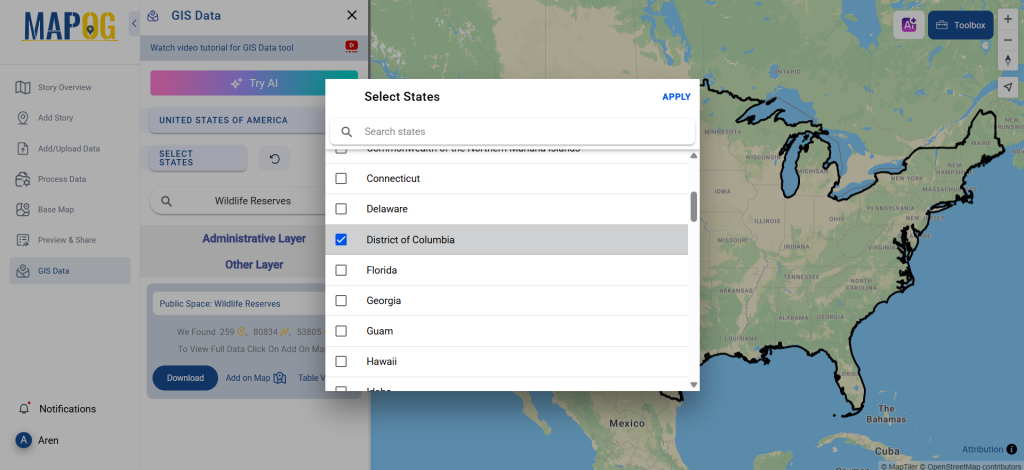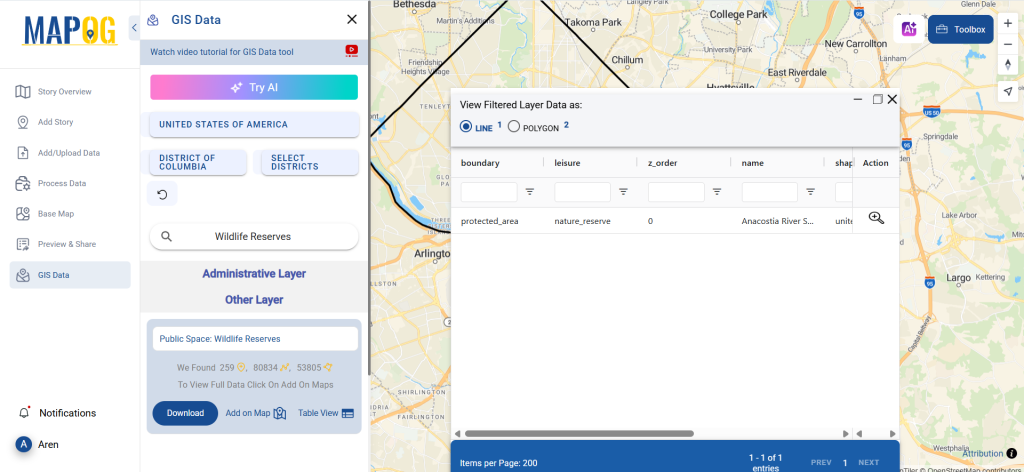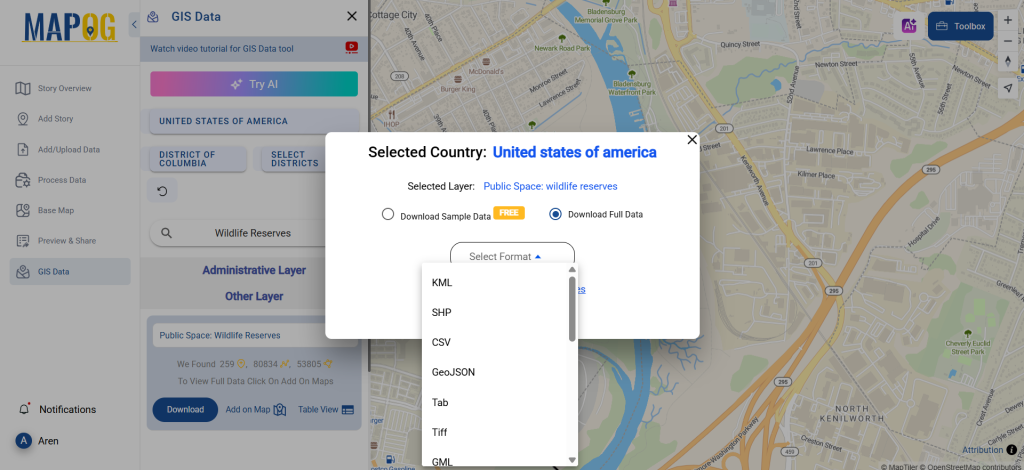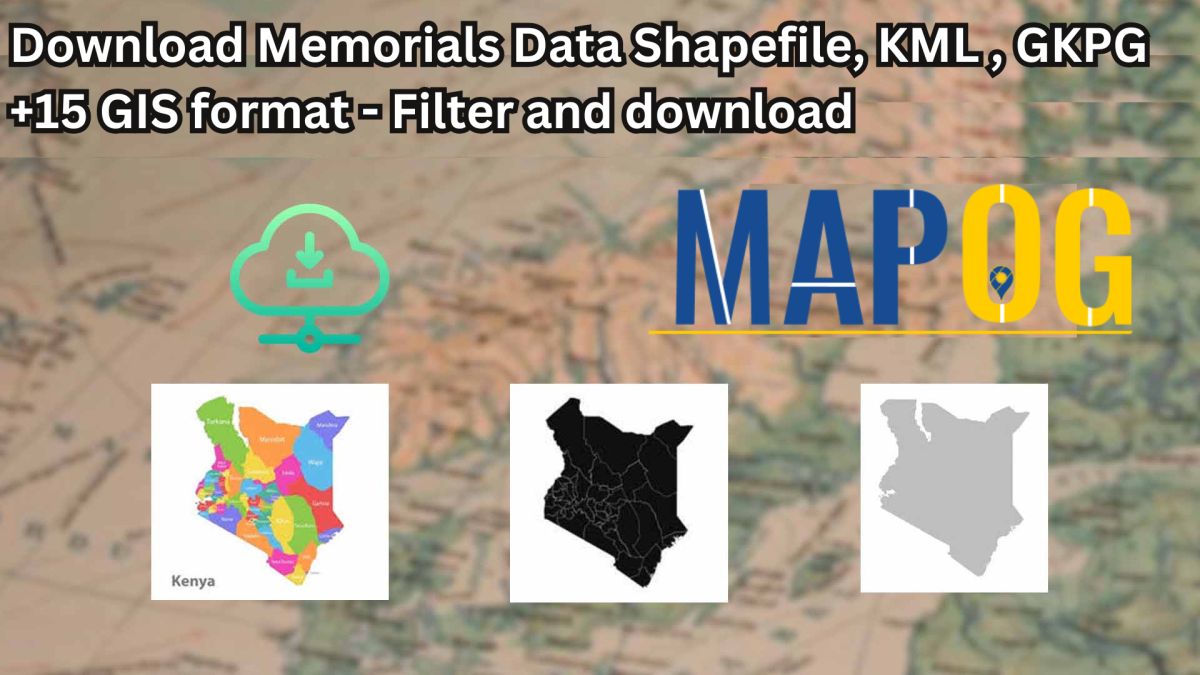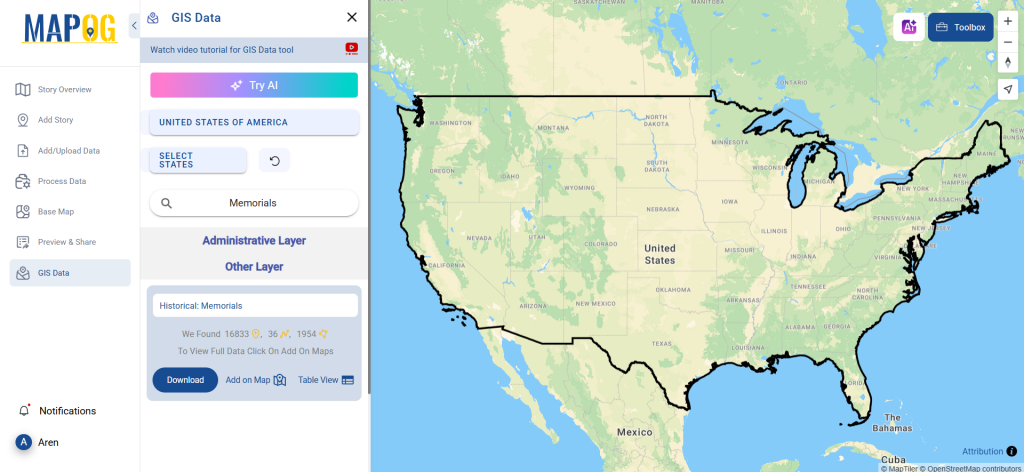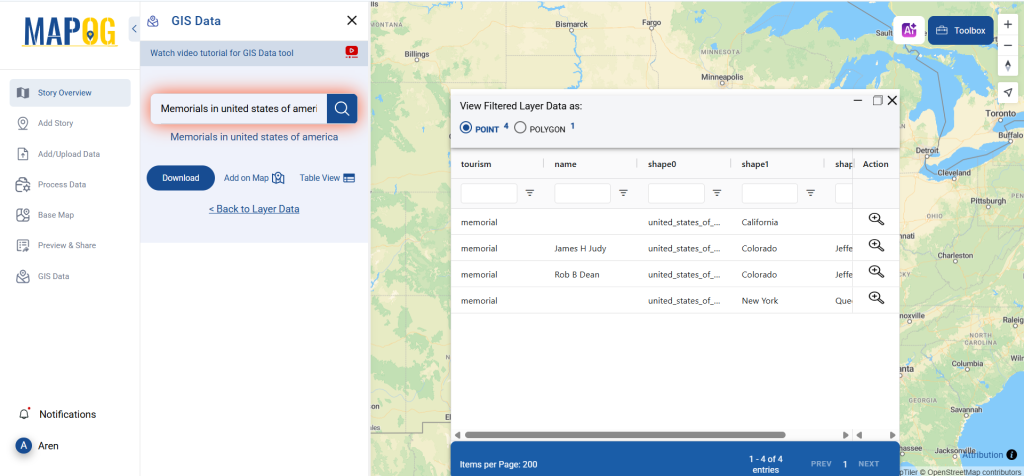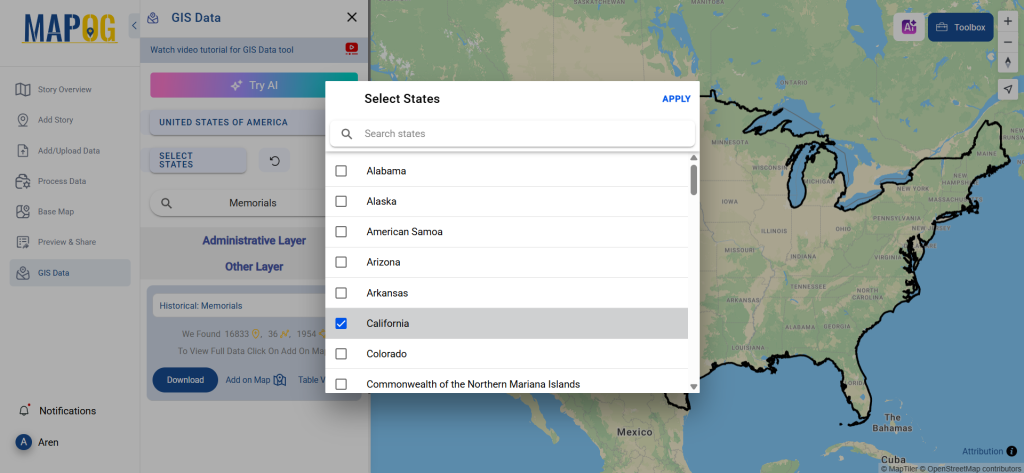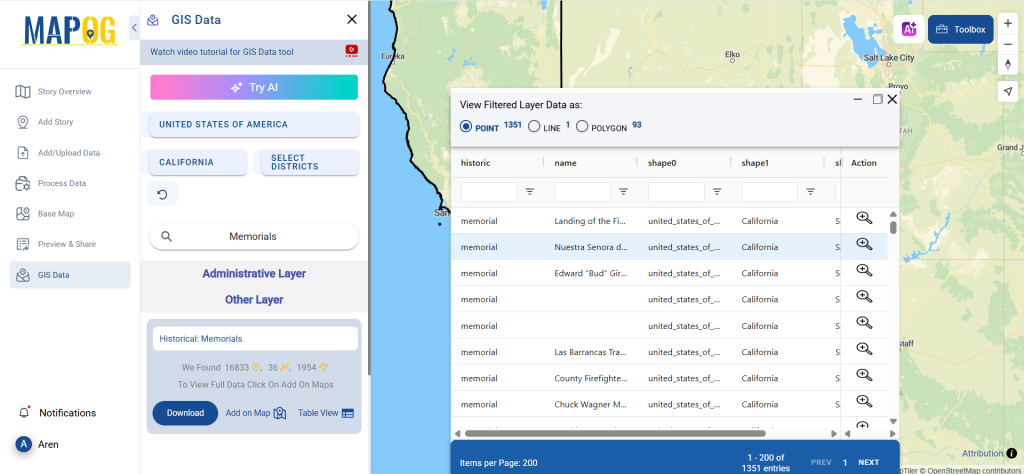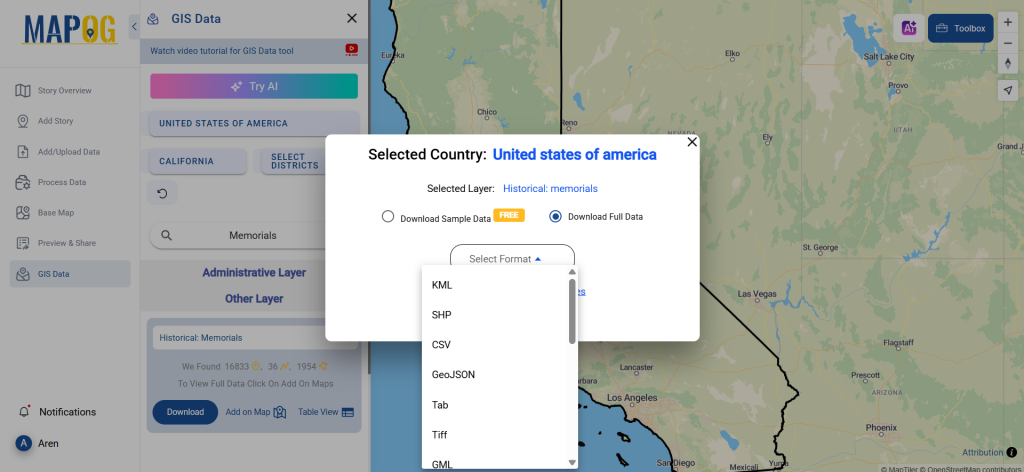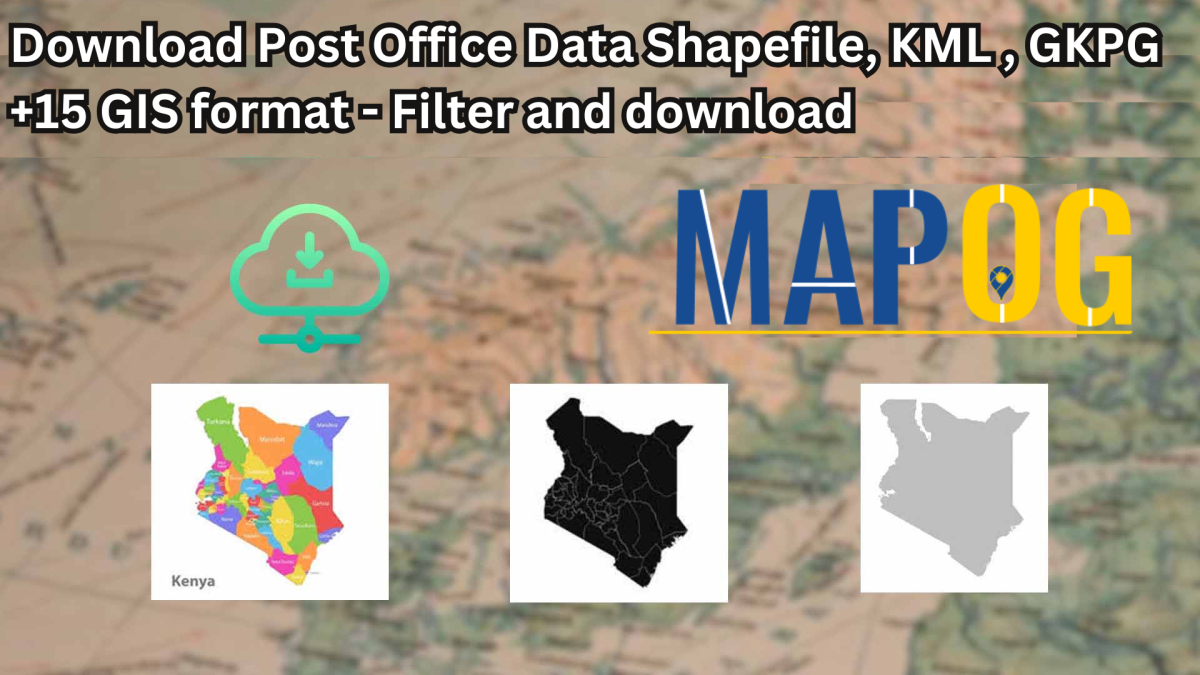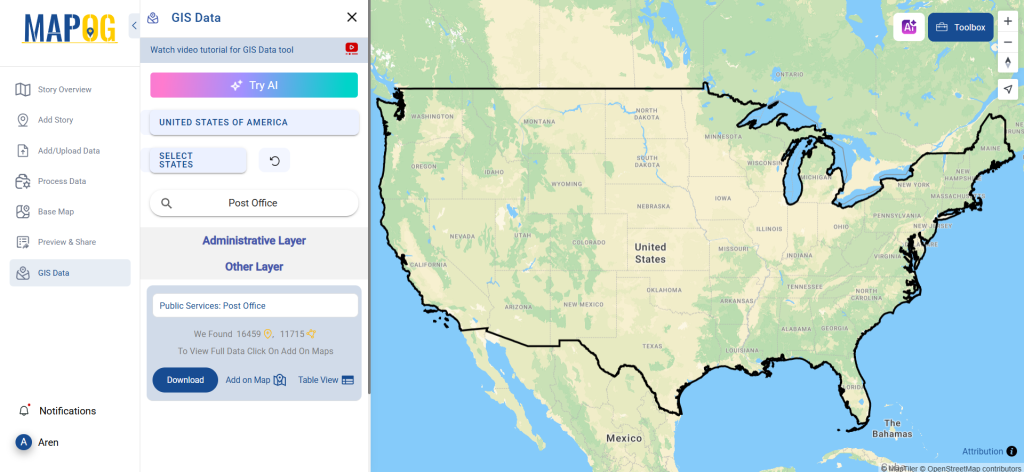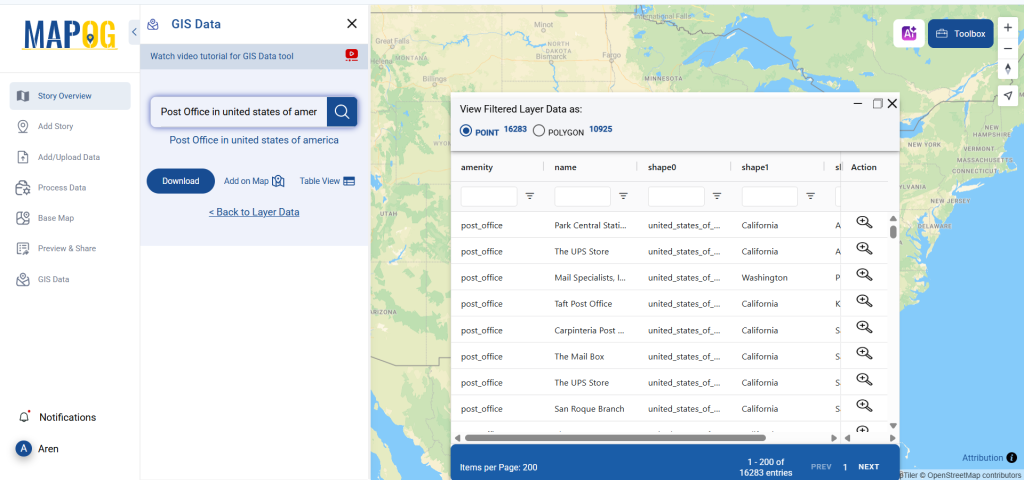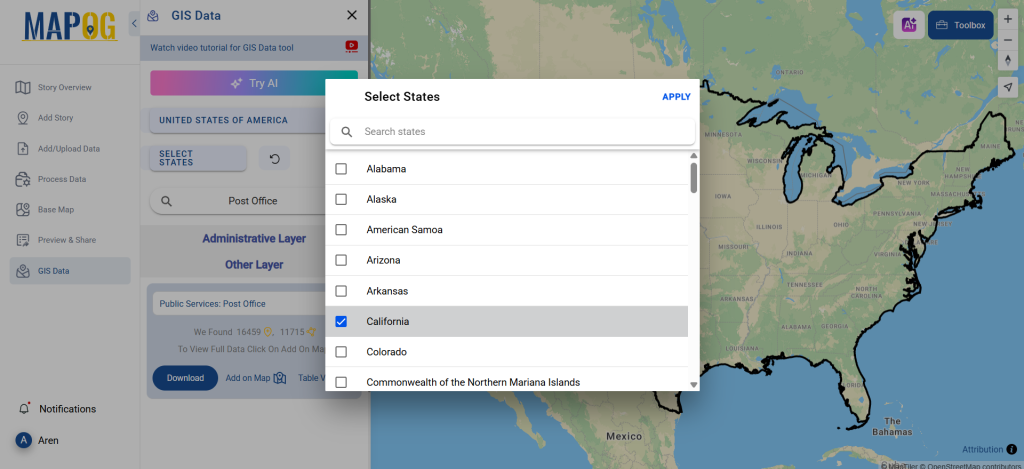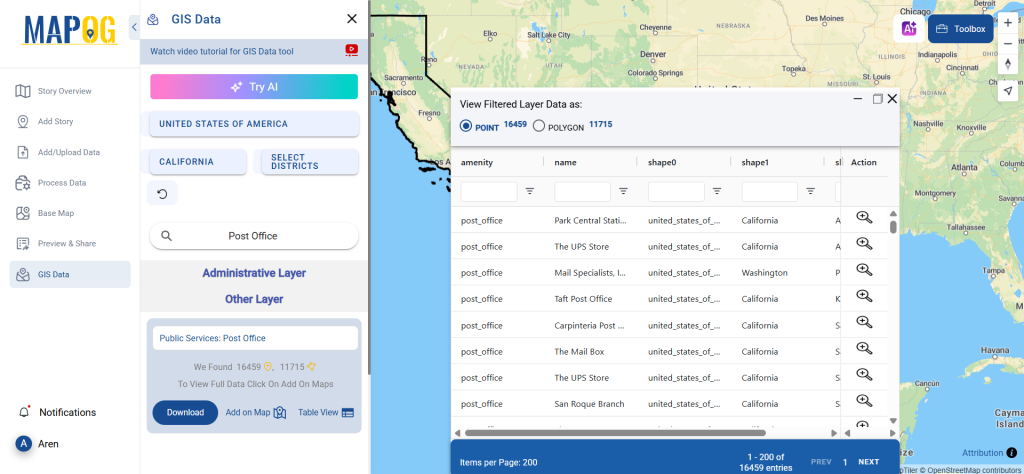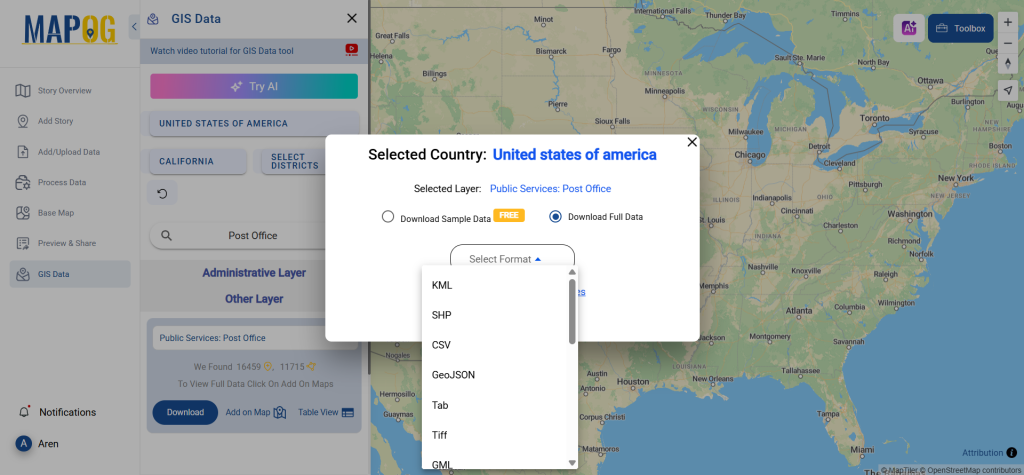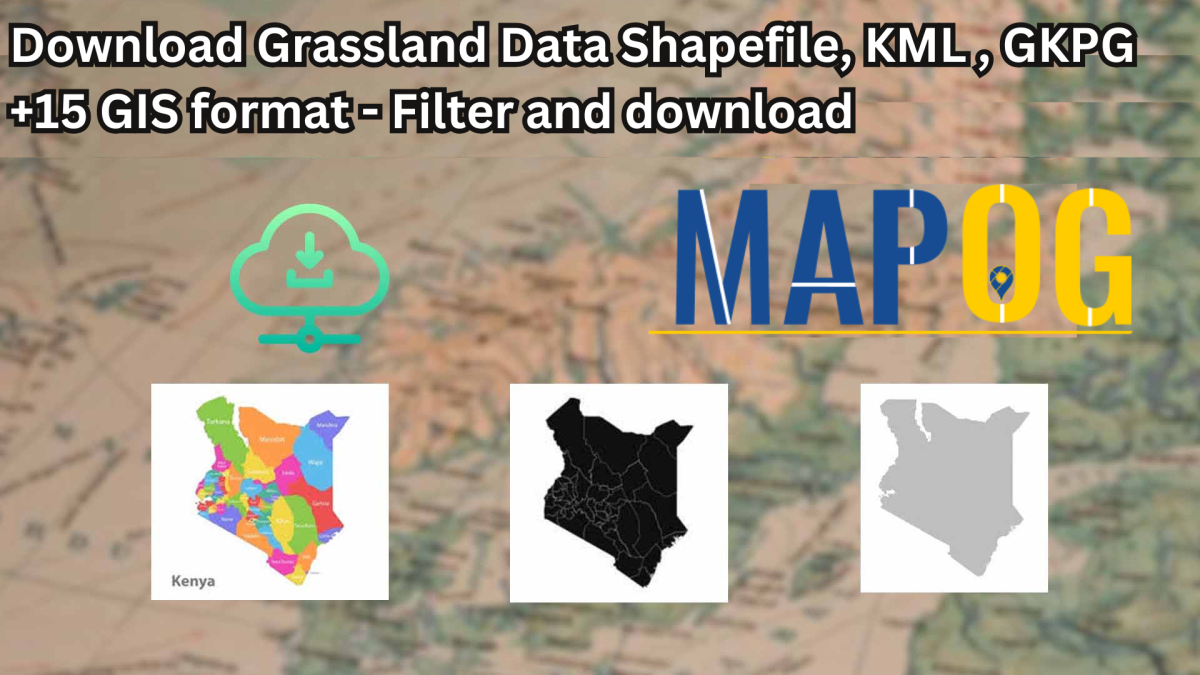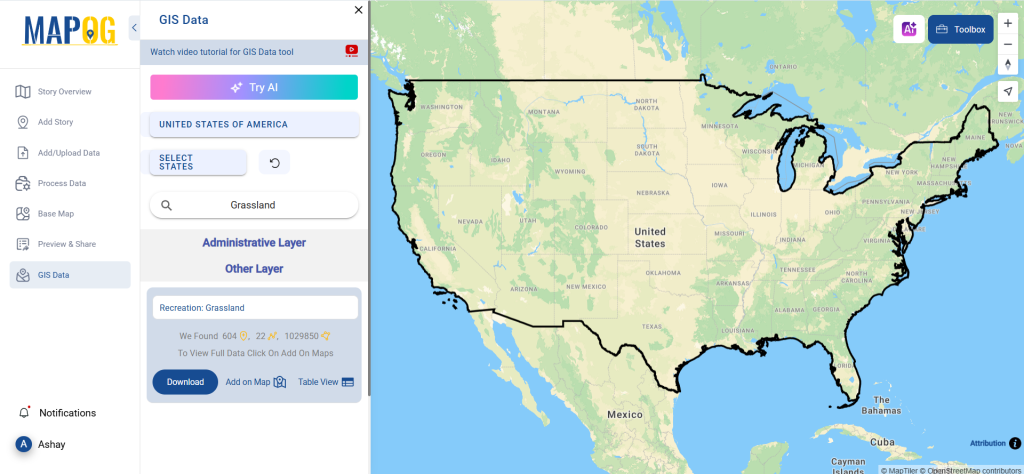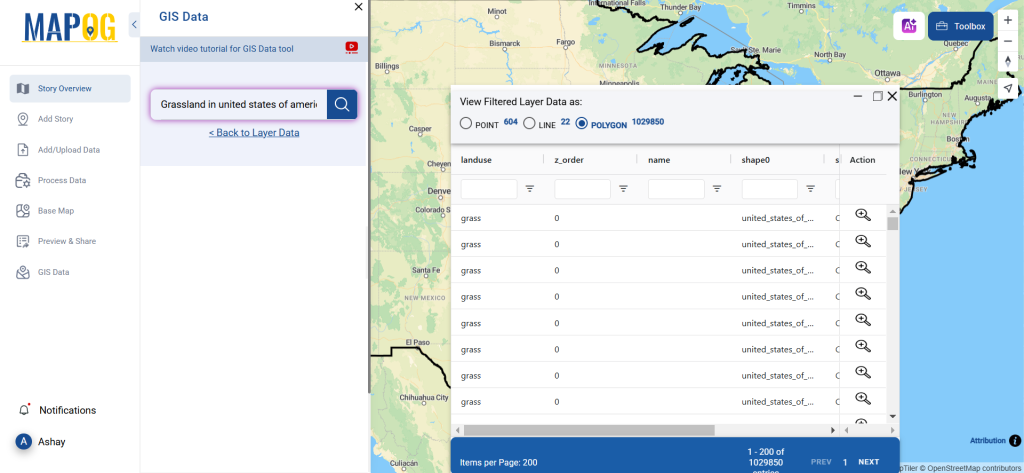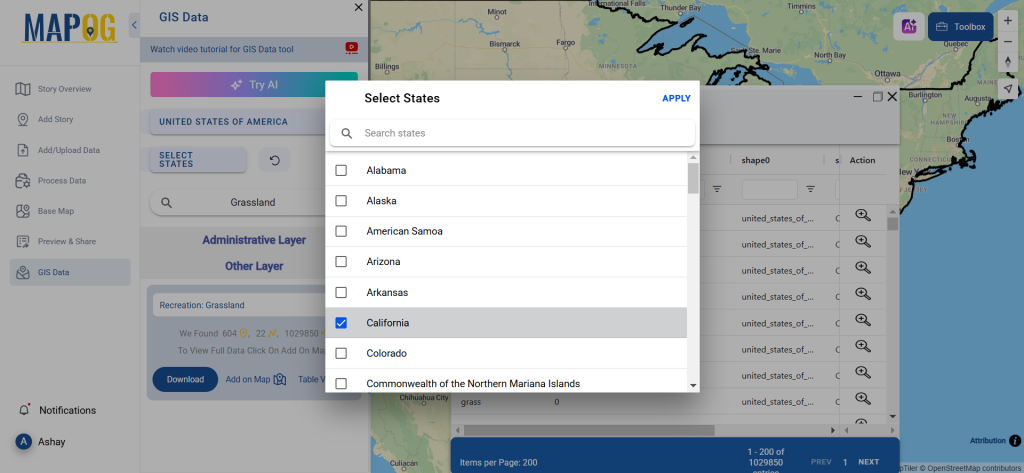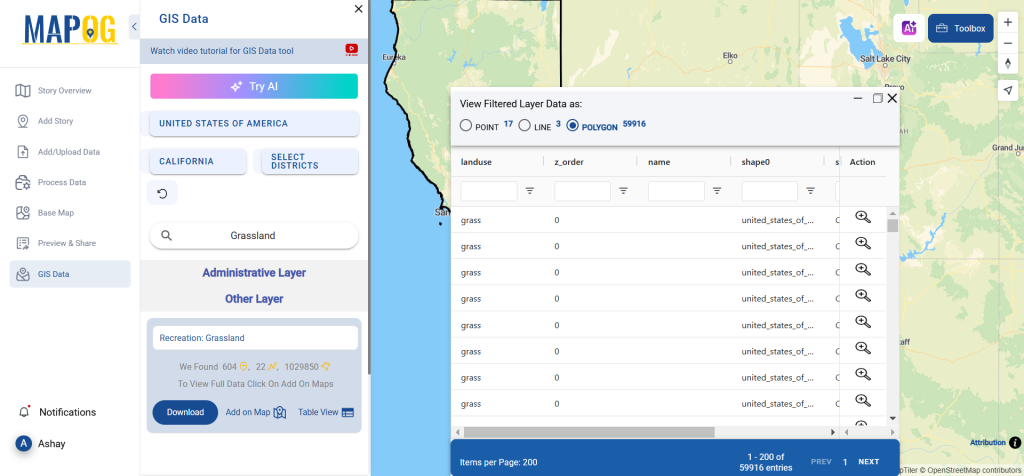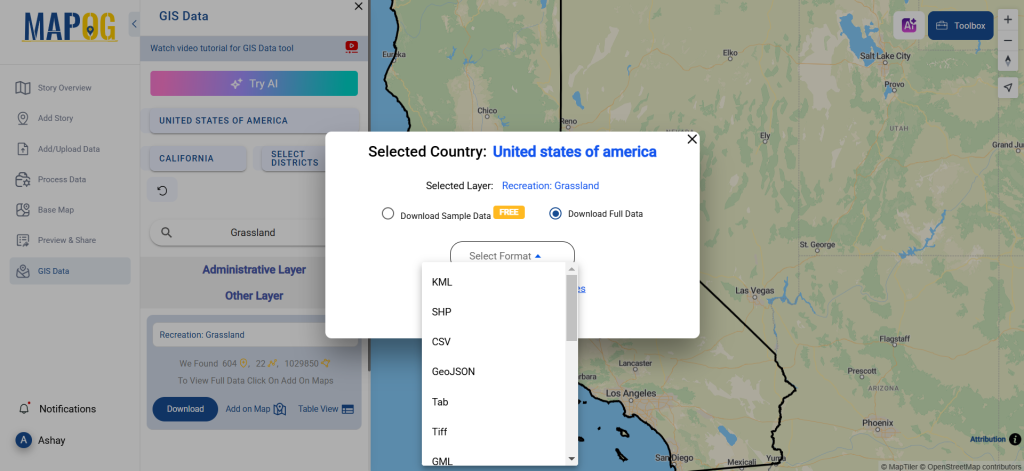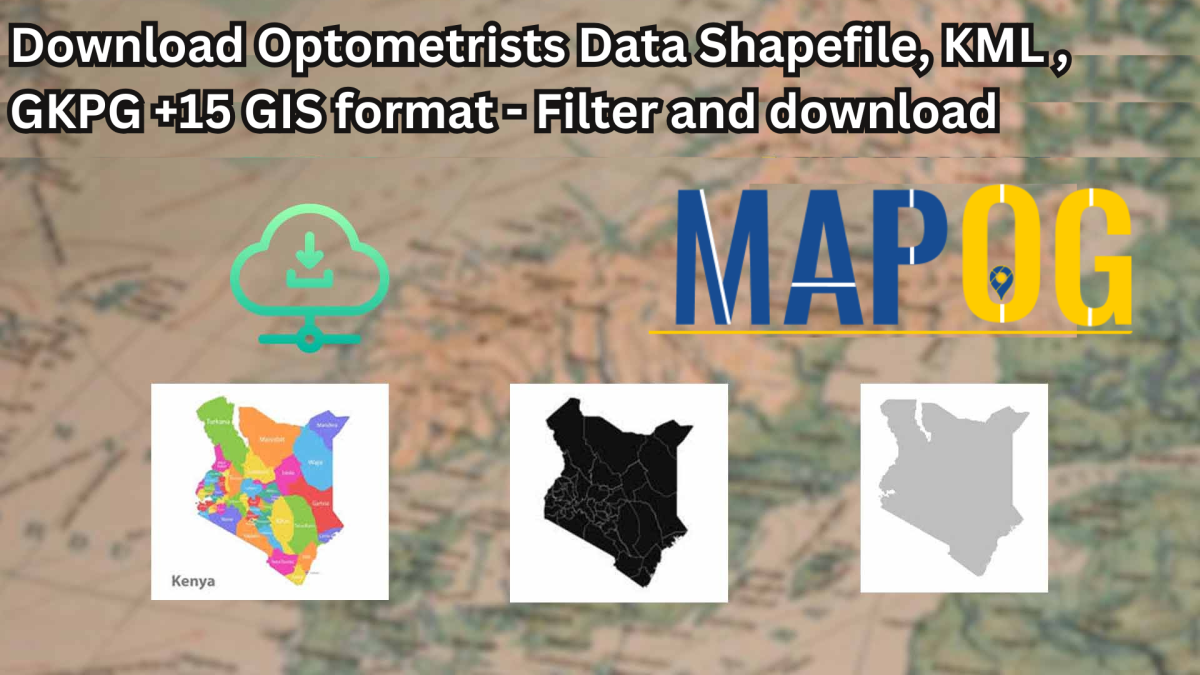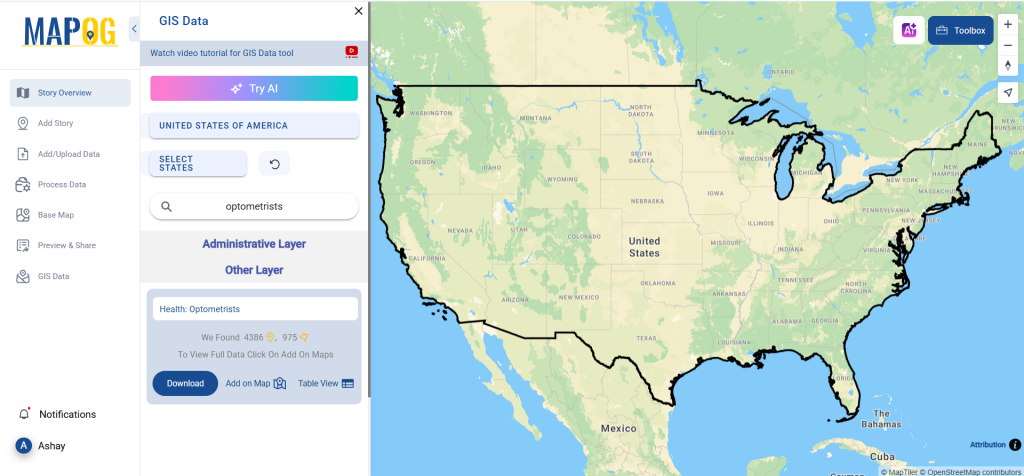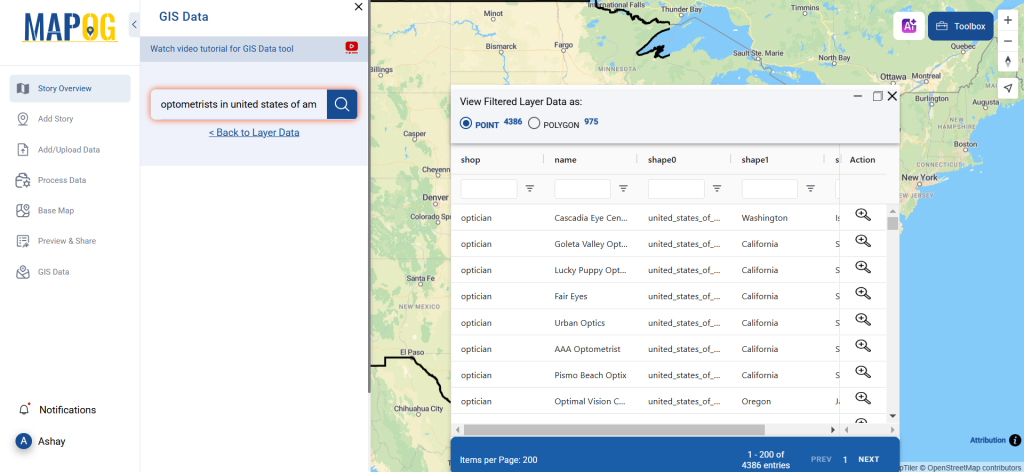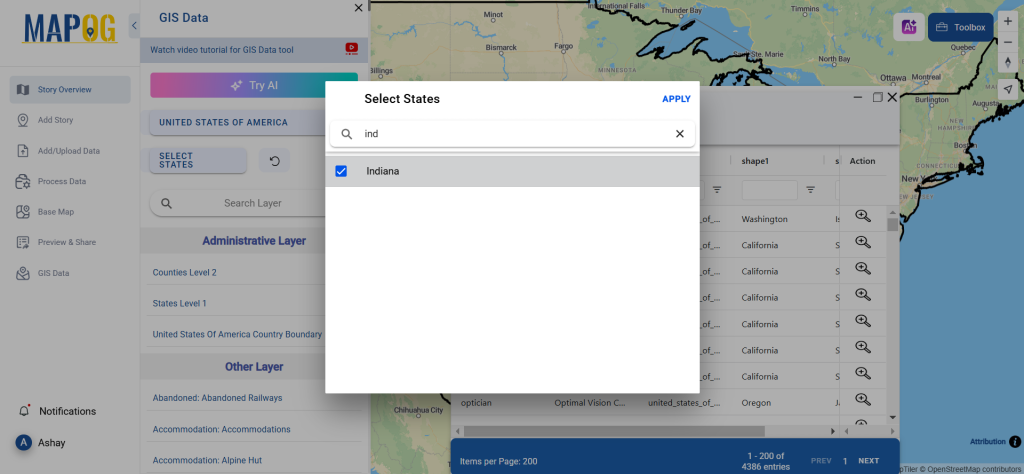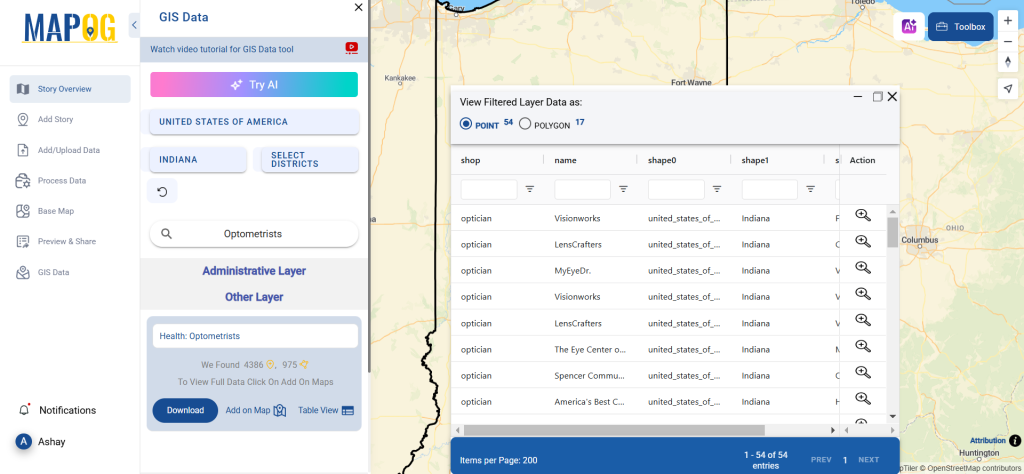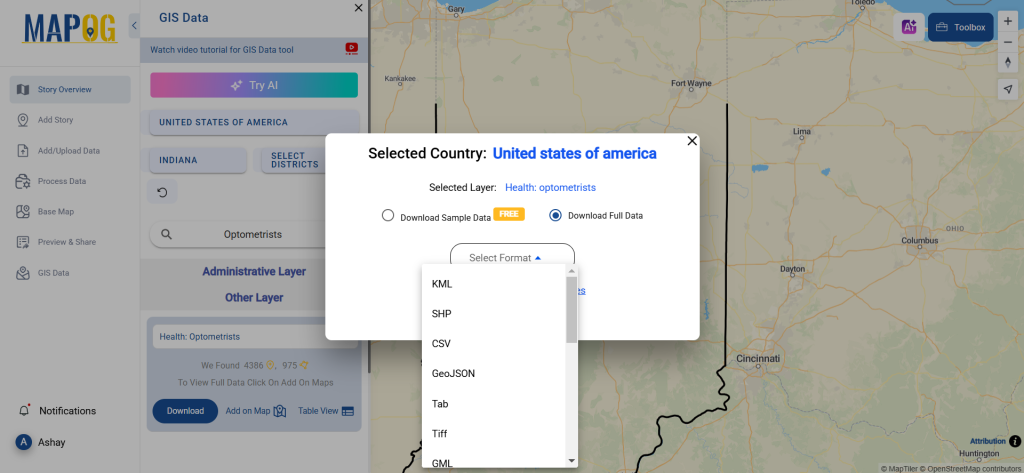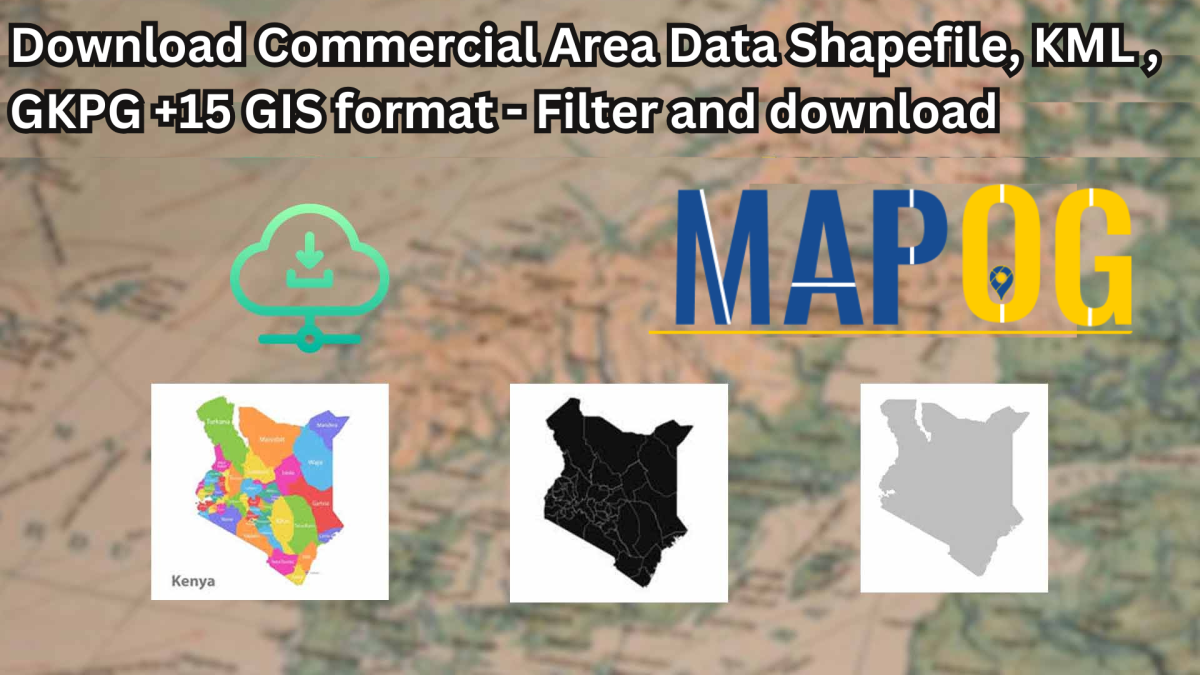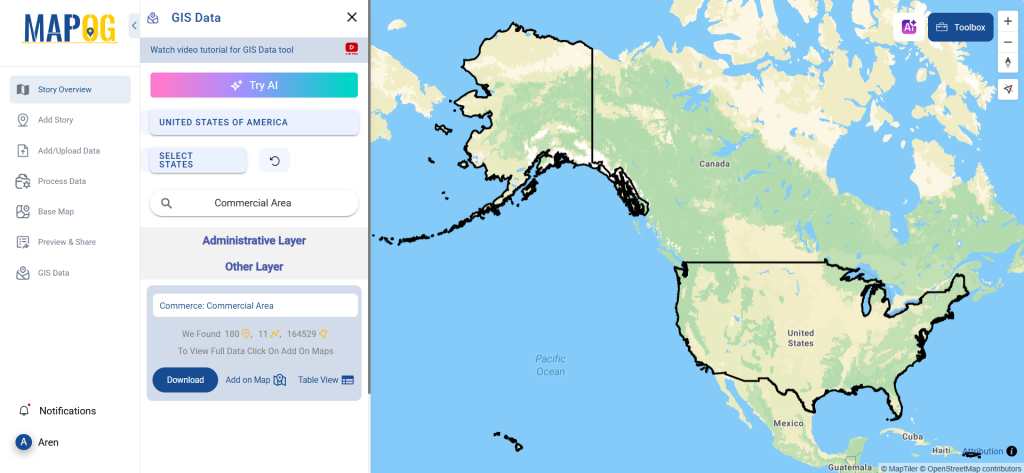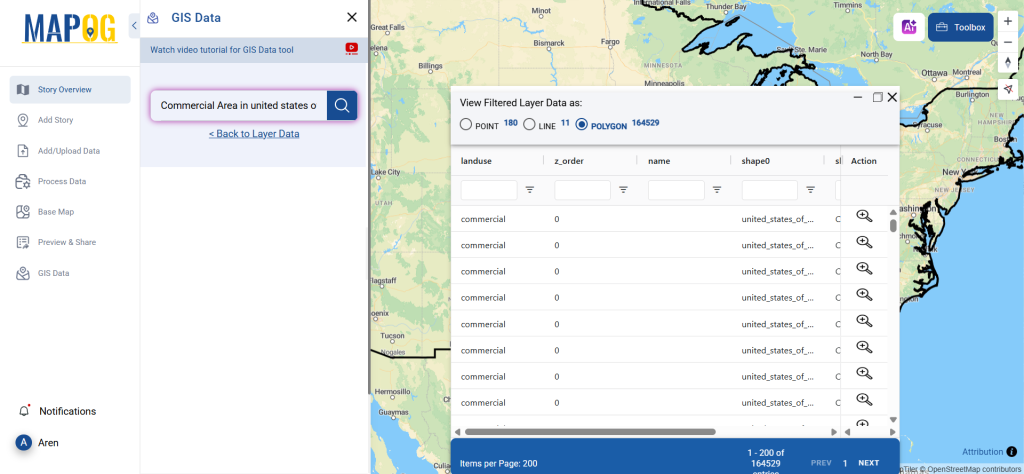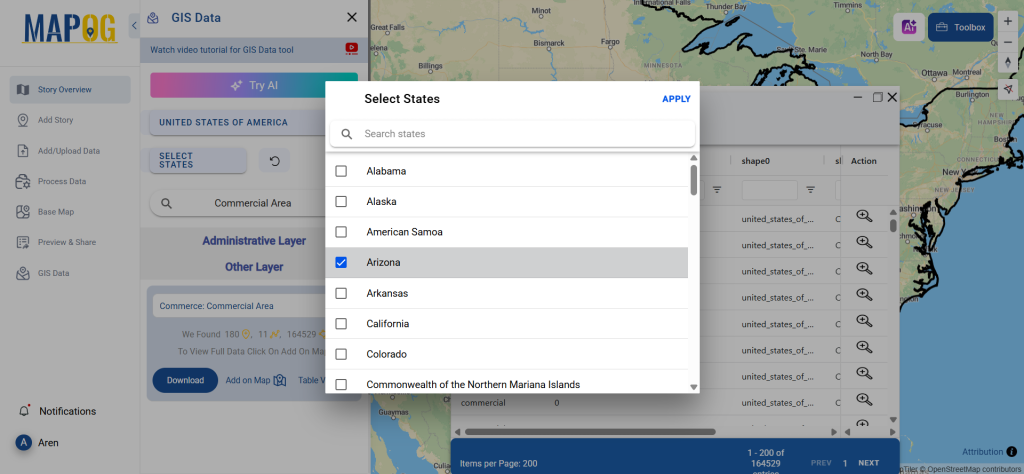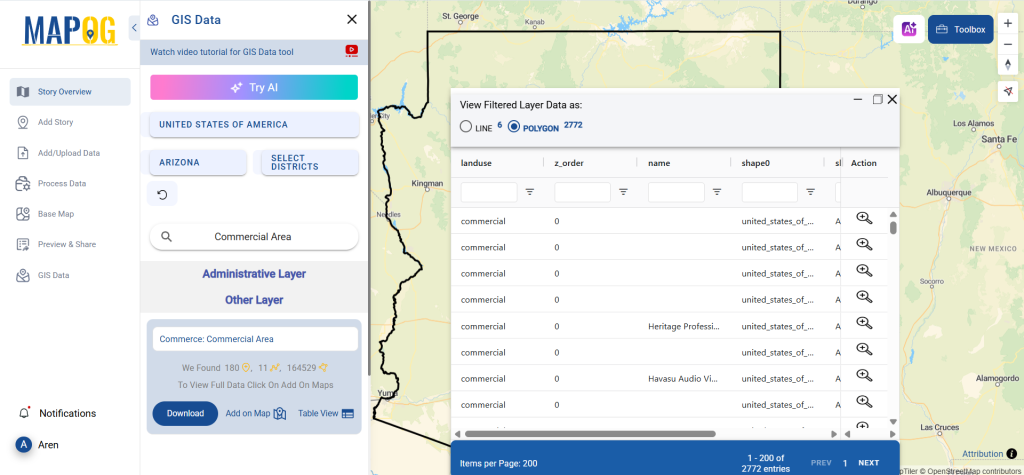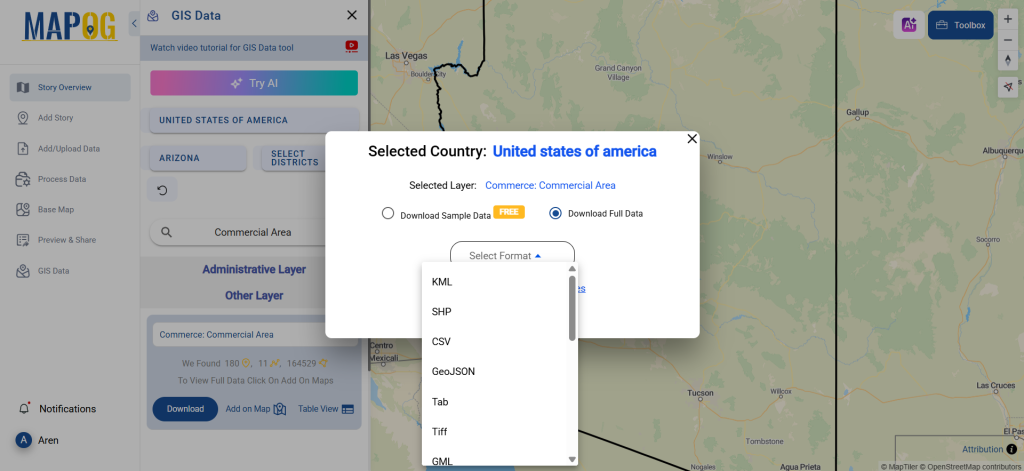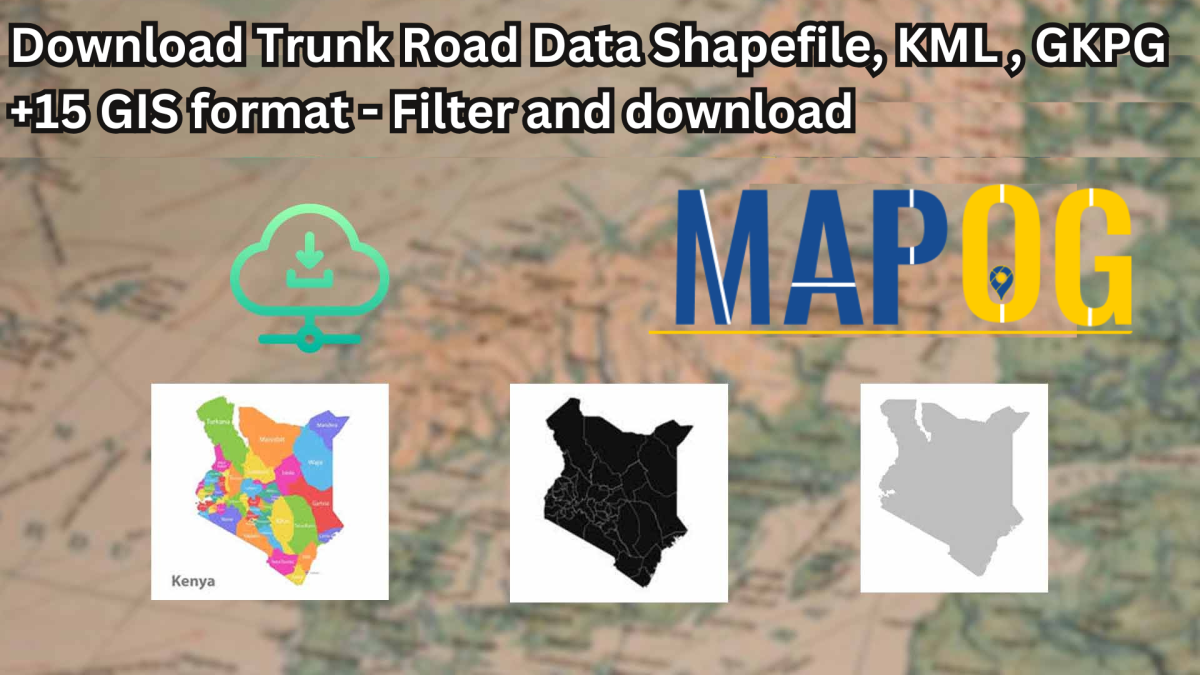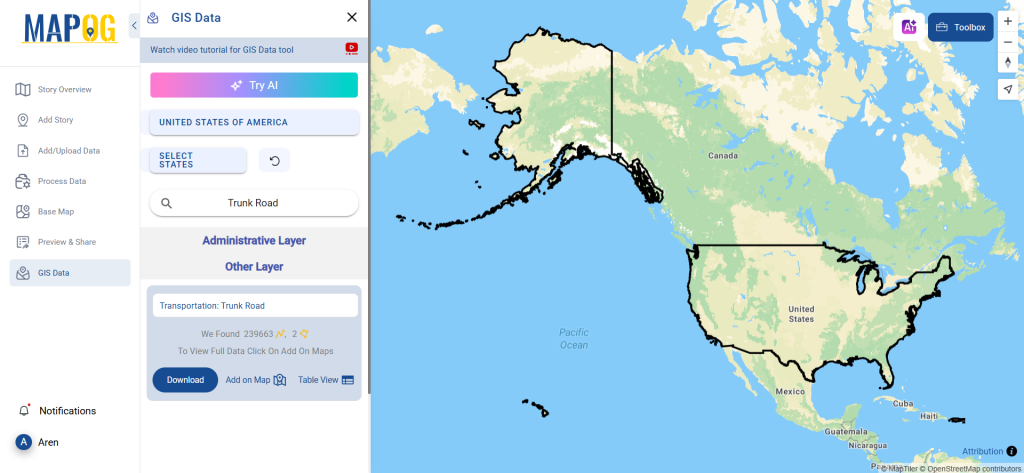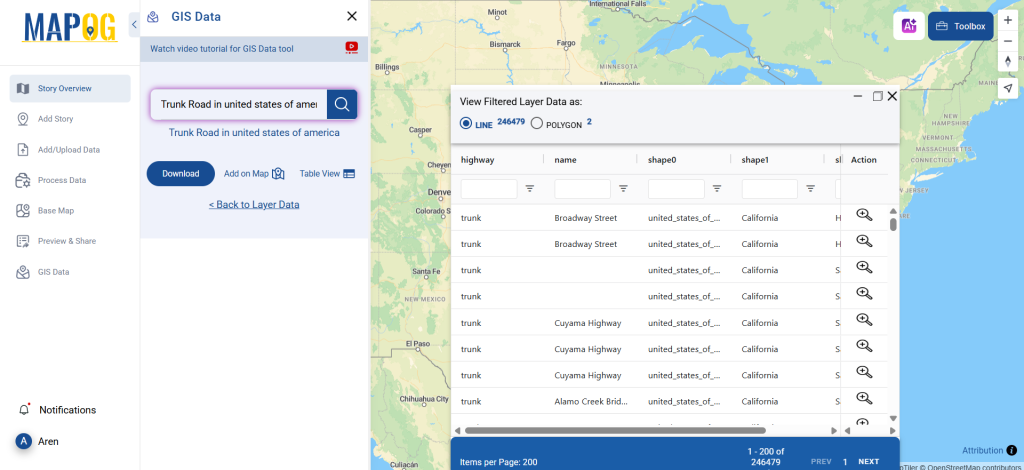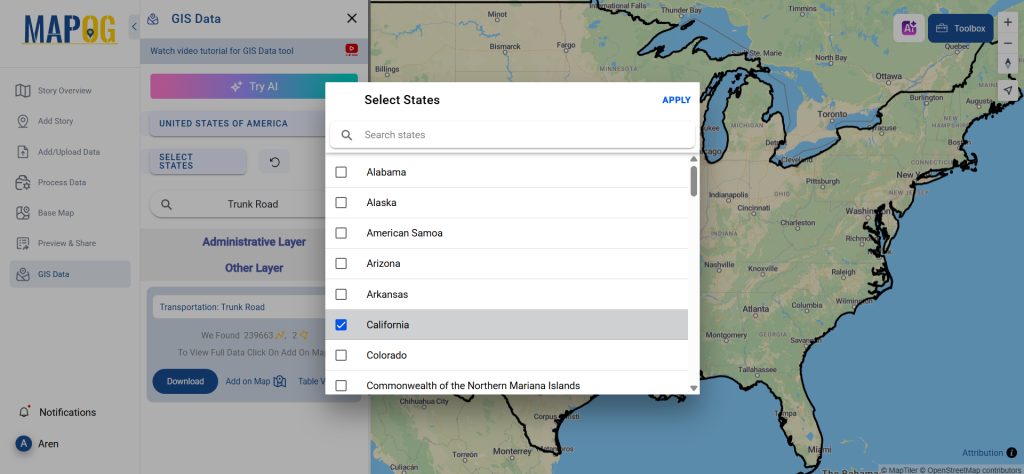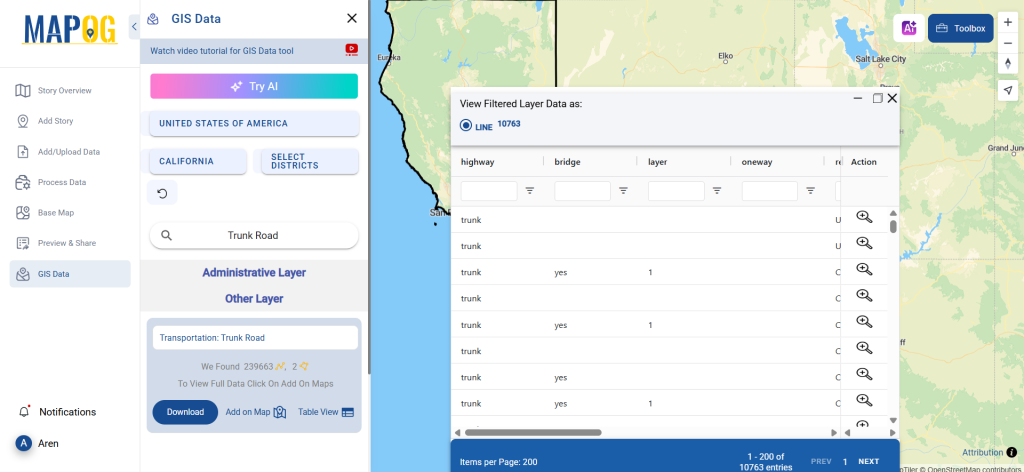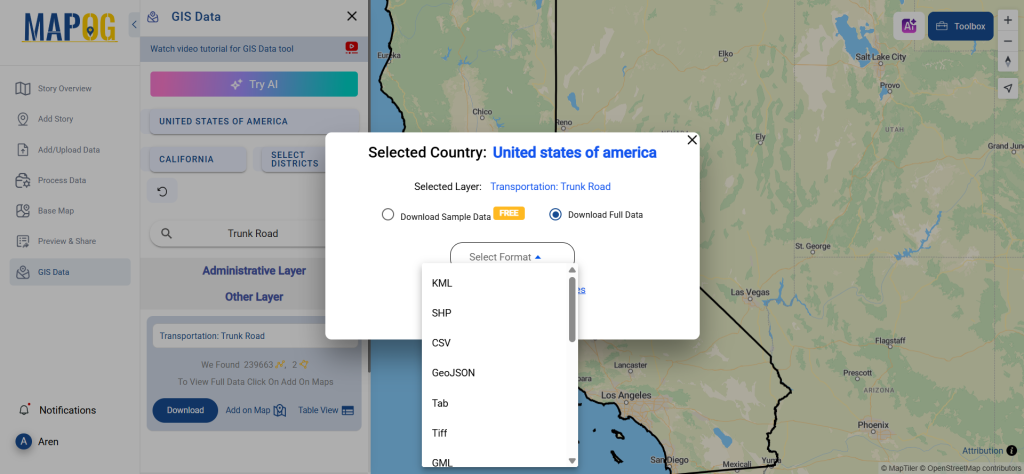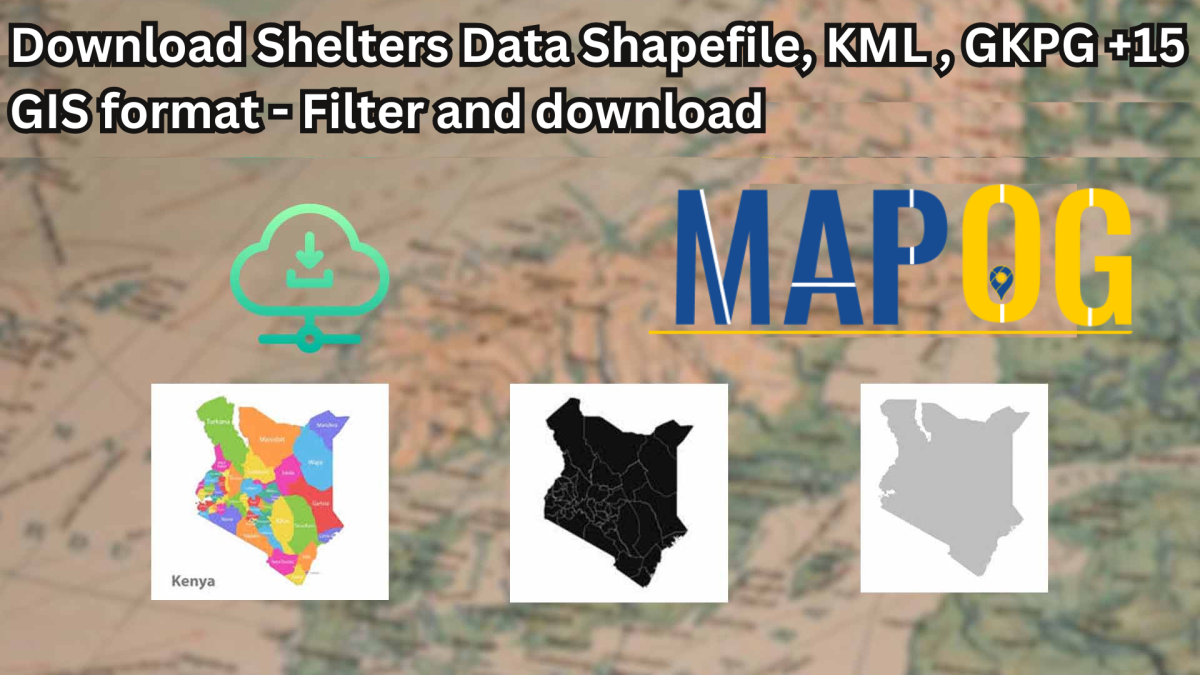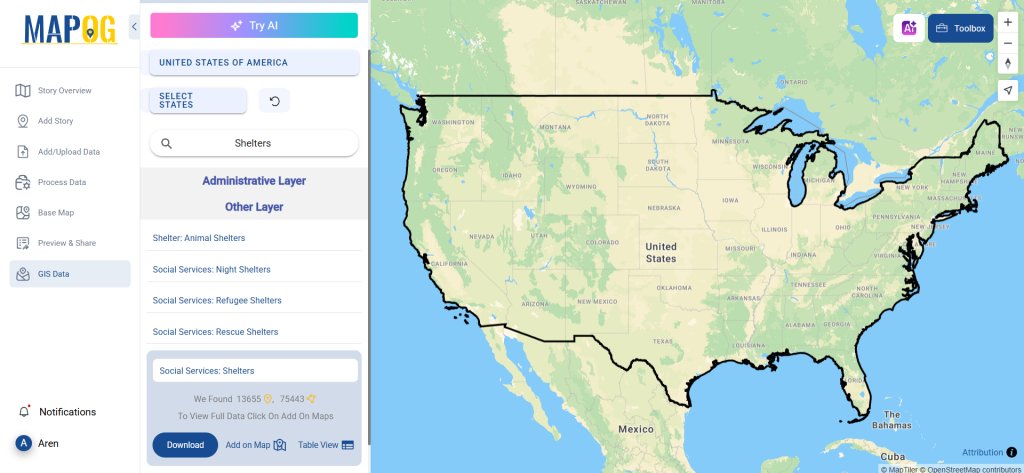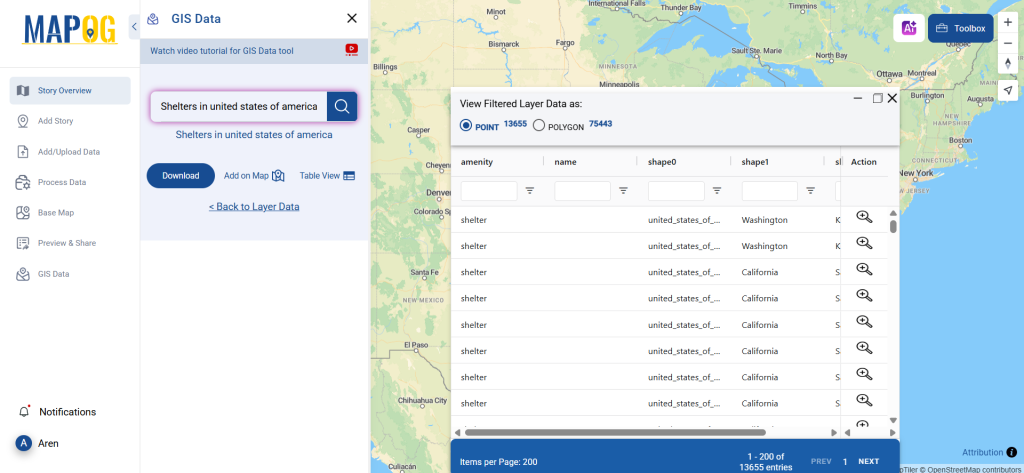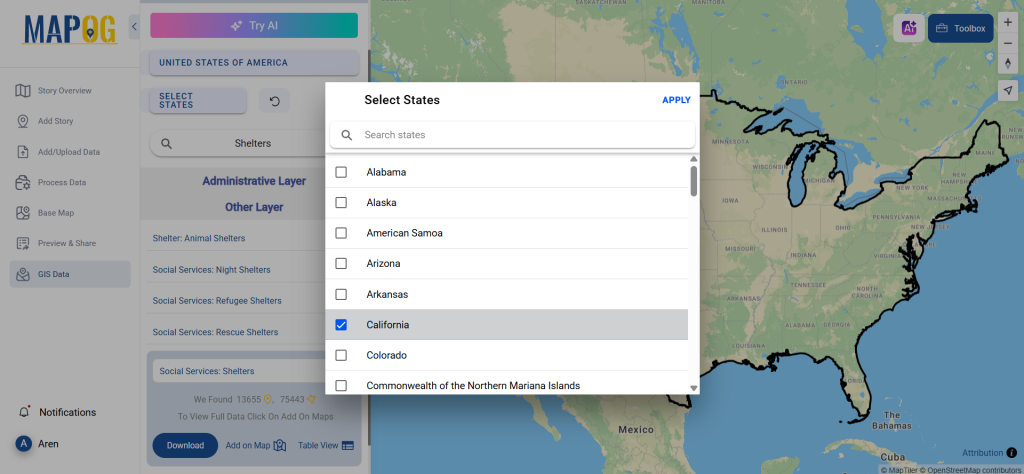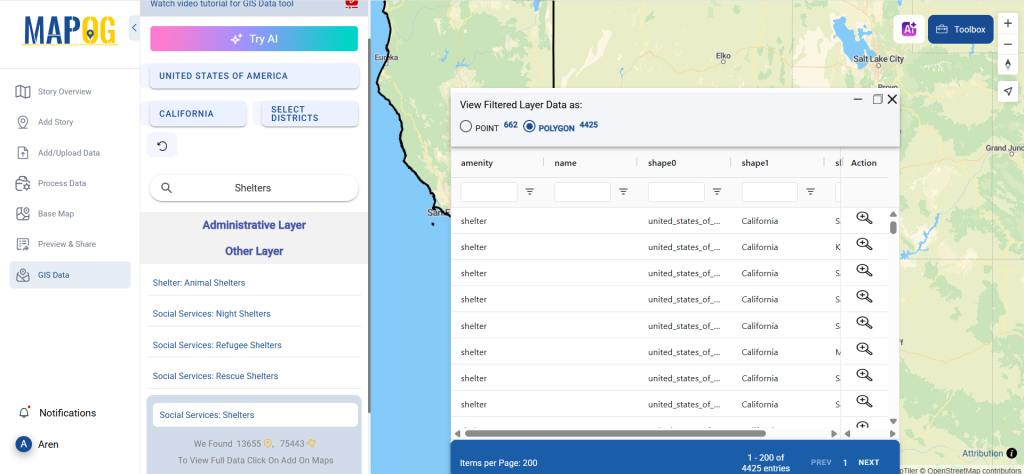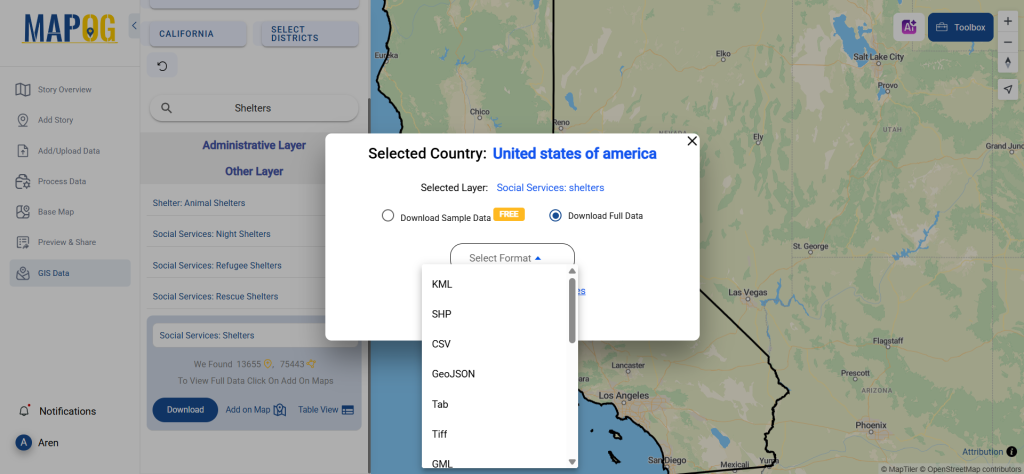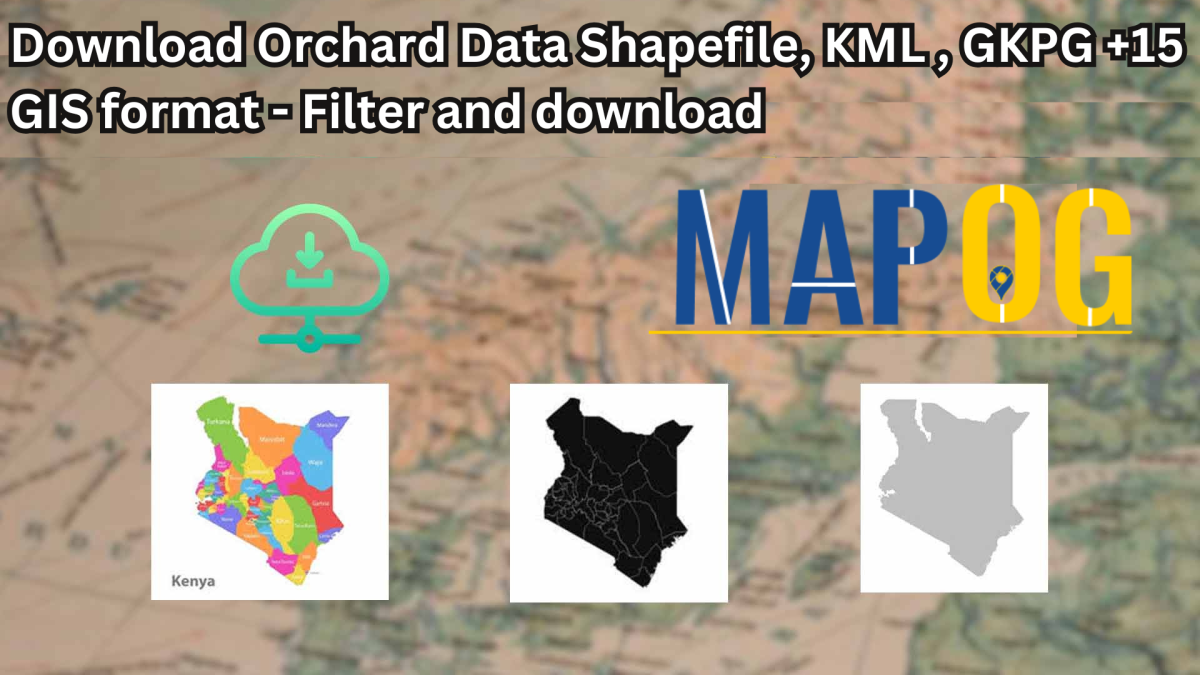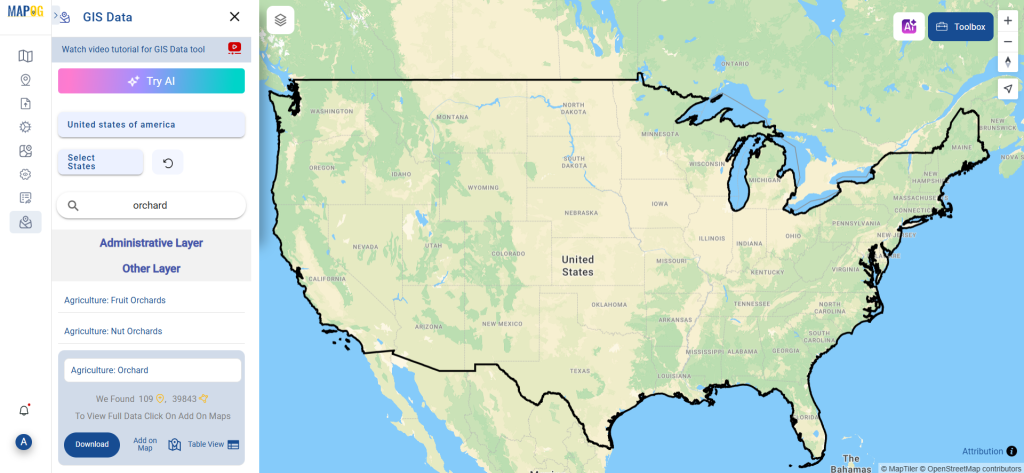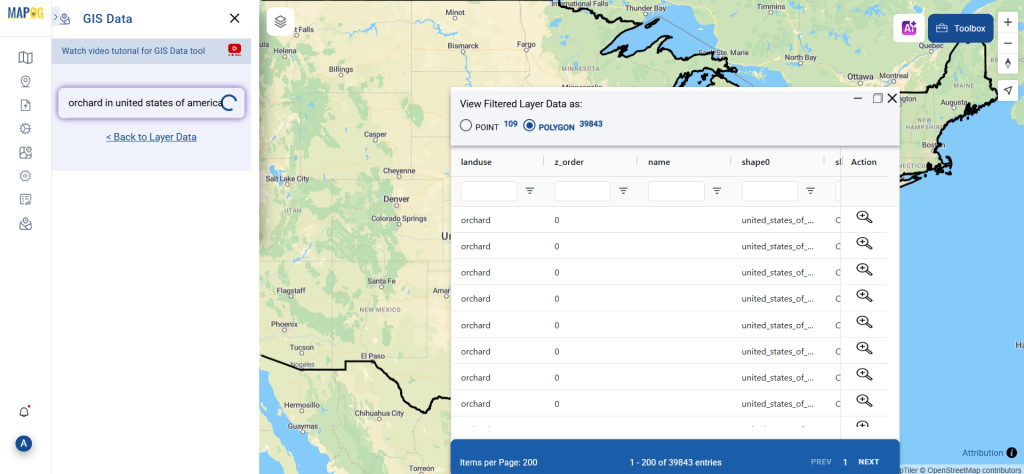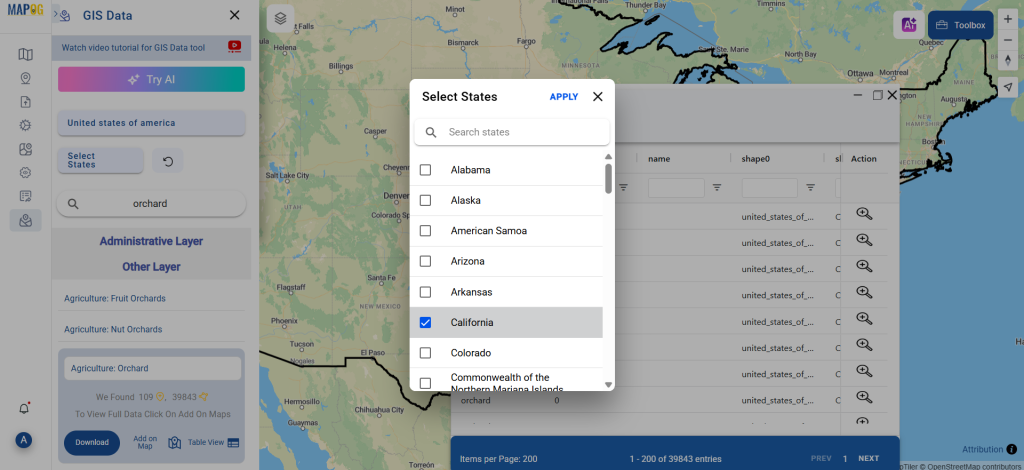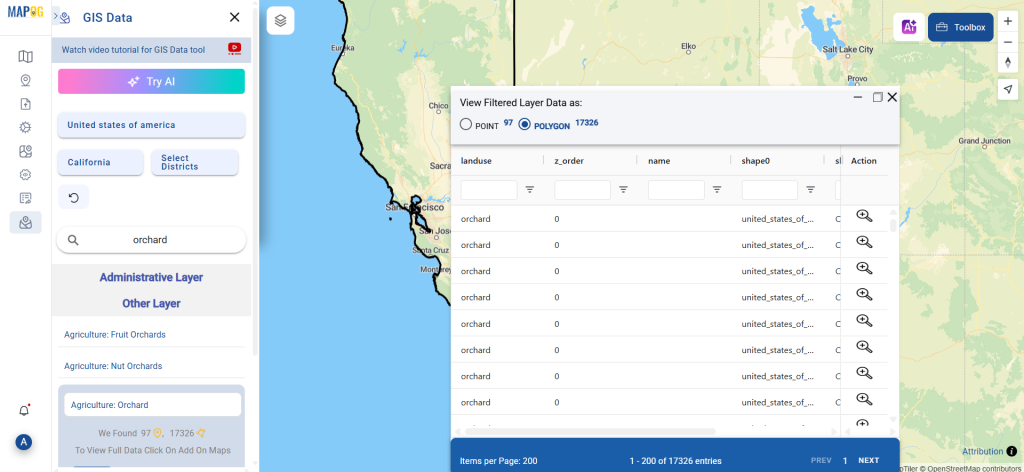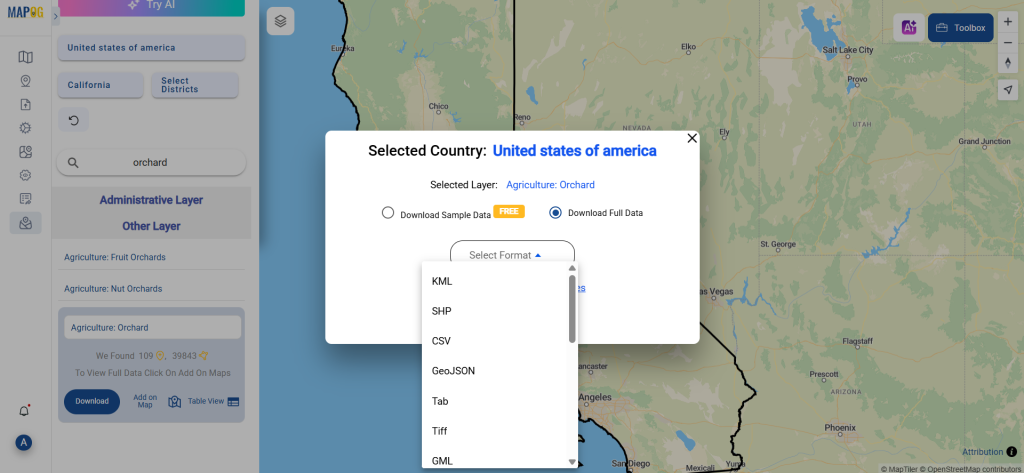Looking for accurate and structured information on dental clinic locations? With GIS Data by MAPOG, you can easily Download Dental Clinics Data in multiple formats, including Shapefile, KML, GeoJSON, and MID, along with 15+ other GIS-supported file types. Whether the purpose is healthcare accessibility analysis, urban planning, or medical research, MAPOG delivers up-to-date, geo-referenced datasets that are ready for seamless mapping and integration into various GIS platforms.
How to Download Dental Clinics Data
MAPOG makes the process simple and efficient, providing access to data from thousands of layers across the globe. With support for formats like KML, SHP, CSV, GeoJSON, SQL, DXF, MIF, TOPOJSON, and GPX, the platform caters to a wide range of GIS users—whether you’re an analyst, researcher, or policymaker.
Download Dental Clinics Data of any countries
Note:
- All data is provided in GCS datum EPSG:4326 WGS84 CRS (Coordinate Reference System).
- Users need to log in to access and download their preferred data formats.
Step-by-Step Guide to Download Dental Clinics Data
Step 1: Search for Dental Clinics Data
Begin by entering “Dental Clinics Data” in the search layer function. Review the dataset’s attributes to confirm whether the information is available in point or polygon format.
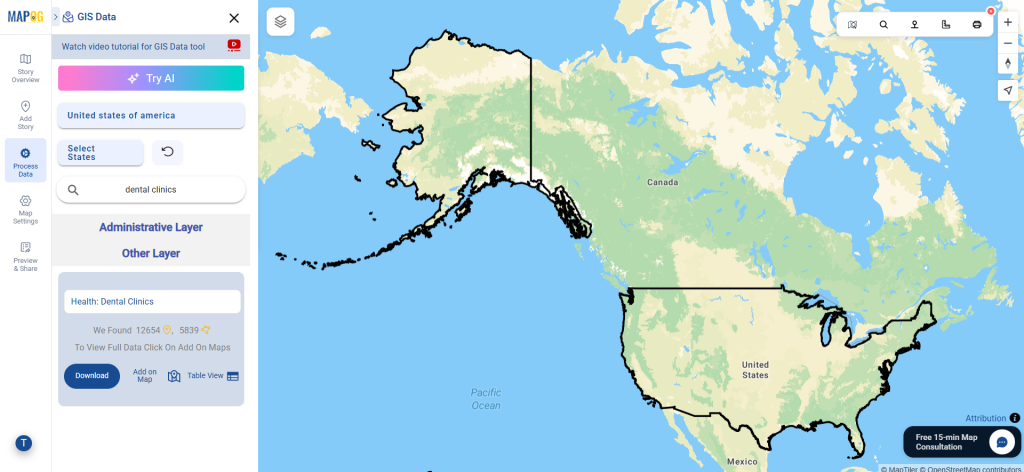
Step 2: Use the AI Search Tool
Leverage the “Try AI” feature in MAPOG by typing keywords such as “Dental Clinics in area.” The AI will instantly fetch the most relevant datasets, reducing search time and ensuring better precision.
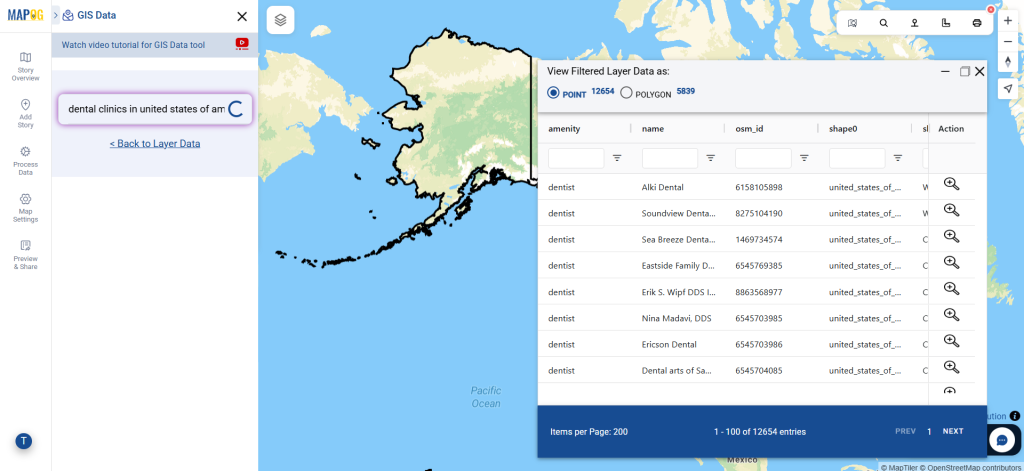
Step 3: Apply Data Filters
For more targeted results, use the Filter Data option to narrow down information by state and district. This feature is particularly useful when analyzing data within a specific region for in-depth planning or research.
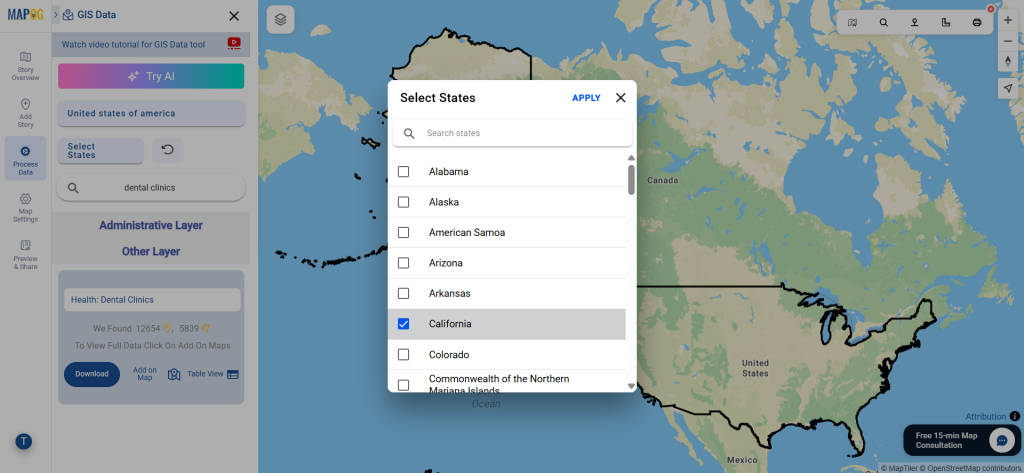
Step 4: Visualize with “Add on Map”
Select the “Add on Map” option to overlay your chosen data layer on MAPOG’s interactive GIS interface. This allows you to visualize dental clinic distribution patterns, proximity to communities, and accessibility, aiding in detailed analysis.
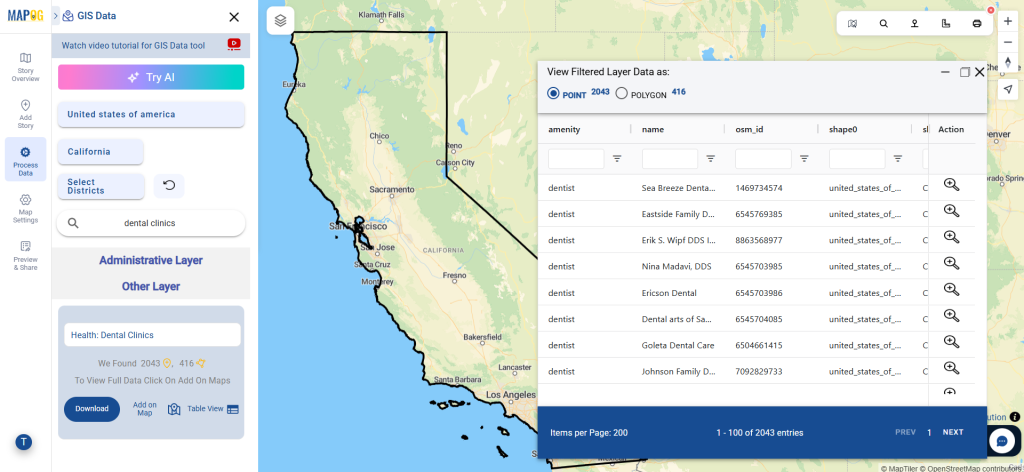
Step 5: Download Dental Clinics Data
Once you’ve finalized the dataset, click “Download Data.” Choose between downloading a sample or the complete dataset, select your desired format (Shapefile, KML, GeoJSON, MID, or others), agree to the terms, and proceed with the download.
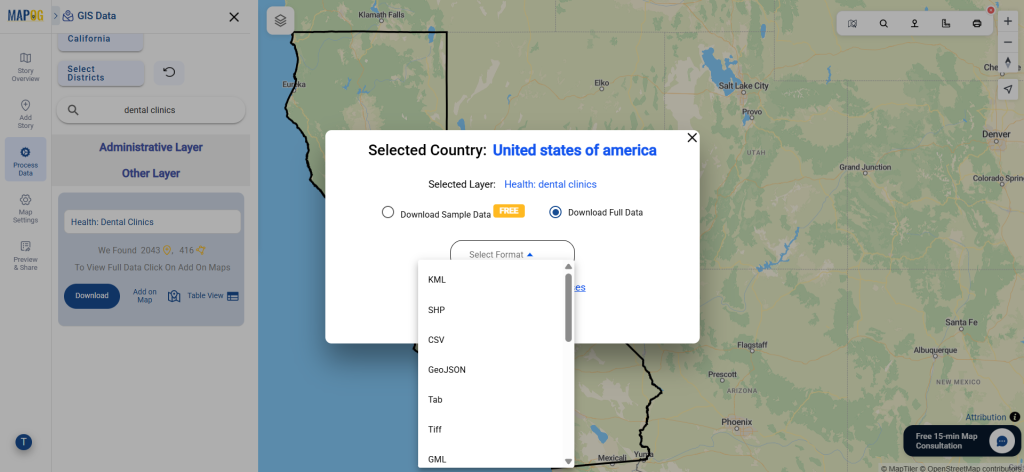
Final Thoughts
With GIS Data by MAPOG, the process to Download Dental Clinics Data is quick, accurate, and highly customizable. From healthcare planners to GIS professionals, anyone can benefit from these detailed datasets to make informed decisions. By combining precise data with powerful visualization and filtering tools, MAPOG ensures that your mapping and analysis needs are met with efficiency and reliability.
With MAPOG’s versatile toolkit, you can effortlessly upload vector and upload Excel or CSV data, incorporate existing layers, perform Split polygon by line, use the converter for various formats, calculate isochrones, and utilize the Export Tool.
For any questions or further assistance, feel free to reach out to us at support@mapog.com. We’re here to help you make the most of your GIS data.
Download Shapefile for the following:
- World Countries Shapefile
- Australia
- Argentina
- Austria
- Belgium
- Brazil
- Canada
- Denmark
- Fiji
- Finland
- Germany
- Greece
- India
- Indonesia
- Ireland
- Italy
- Japan
- Kenya
- Lebanon
- Madagascar
- Malaysia
- Mexico
- Mongolia
- Netherlands
- New Zealand
- Nigeria
- Papua New Guinea
- Philippines
- Poland
- Russia
- Singapore
- South Africa
- South Korea
- Spain
- Switzerland
- Tunisia
- United Kingdom Shapefile
- United States of America
- Vietnam
- Croatia
- Chile
- Norway
- Maldives
- Bhutan
- Colombia
- Libya
- Comoros
- Hungary
- Laos
- Estonia
- Iraq
- Portugal
- Azerbaijan
- Macedonia
- Romania
- Peru
- Marshall Islands
- Slovenia
- Nauru
- Guatemala
- El Salvador
- Afghanistan
- Cyprus
- Syria
- Slovakia
- Luxembourg
- Jordan
- Armenia
- Haiti And Dominican Republic
- Malta
- Djibouti
- East Timor
- Micronesia
- Morocco
- Liberia
- Kosovo
- Isle Of Man
- Paraguay
- Tokelau
- Palau
- Ile De Clipperton
- Mauritius
- Equatorial Guinea
- Tonga
- Myanmar
- Thailand
- New Caledonia
- Niger
- Nicaragua
- Pakistan
- Nepal
- Seychelles
- Democratic Republic of the Congo
- China
- Kenya
- Kyrgyzstan
- Bosnia Herzegovina
- Burkina Faso
- Canary Island
- Togo
- Israel And Palestine
- Algeria
- Suriname
- Angola
- Cape Verde
- Liechtenstein
- Taiwan
- Turkmenistan
- Tuvalu
- Ivory Coast
- Moldova
- Somalia
- Belize
- Swaziland
- Solomon Islands
- North Korea
- Sao Tome And Principe
- Guyana
- Serbia
- Senegal And Gambia
- Faroe Islands
- Guernsey Jersey
- Monaco
- Tajikistan
- Pitcairn
Disclaimer : The GIS data provided for download in this article was initially sourced from OpenStreetMap (OSM) and further modified to enhance its usability. Please note that the original data is licensed under the Open Database License (ODbL) by the OpenStreetMap contributors. While modifications have been made to improve the data, any use, redistribution, or modification of this data must comply with the ODbL license terms. For more information on the ODbL, please visit OpenStreetMap’s License Page.
Here are some blogs you might be interested in:
- Download Airport data in Shapefile, KML , MIf +15 GIS format – Filter and download
- Download Bank Data in Shapefile, KML, GeoJSON, and More – Filter and Download
- Download Railway data in Shapefile, KML, GeojSON +15 GIS format
- Download Farmland Data in Shapefile, KML, GeoJSON, and More – Filter and Download
- Download Pharmacy Data in Shapefile, KML, GeoJSON, and More – Filter and Download
- Download ATM Data in Shapefile, KML, MID +15 GIS Formats Using GIS Data by MAPOG
- Download Road Data in Shapefile, KML, GeoJSON, and 15+ GIS Form
